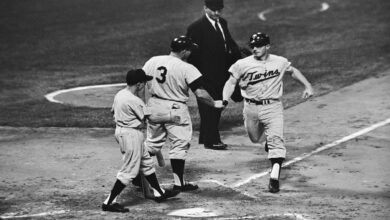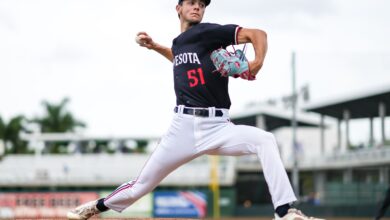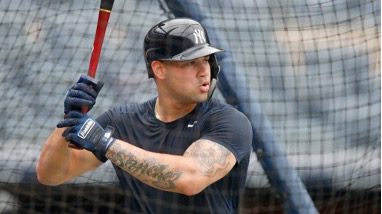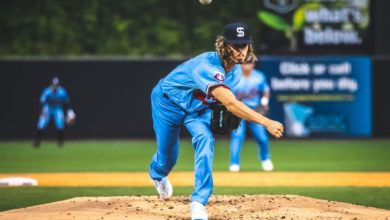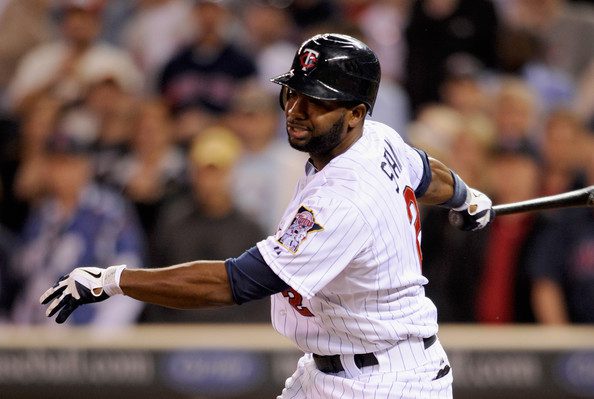
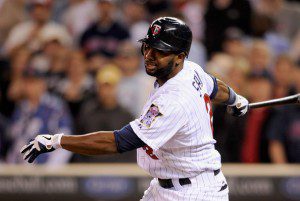
Early in 2011, when the Minnesota Twins were struggling mightily, Denard Span was a bright spot. Posting some of the best fielding numbers of his career, he was near the league lead in WAR and had started to show the on base skills that made him such a valuable player in his first two years. On June 6, he was slashing .291/.364/.385, pretty solid numbers for a center fielder with a good glove. Of course, Span then suffered a concussion that would ruin his season, limiting him to just fourteen more very ineffective games. As Twins fans have seen with Justin Morneau and Corey Koskie, concussions are very serious injuries, and Span’s excellent start is an encouraging sign for a troubled fan base.
Thus far, Span has hit .309/.361/.382. That’s not exactly a world-beating line, but it is solidly above-average (111 wRC+). It’s a far cry from the .294/.387/.432 line he put up as a rookie, but considering this season’s offensive environment (the average major leaguer is slashing .249/.316/.396 this year vs. .264/.333/.416 in 2008) it’s actually not too much of a drop in production. As a good center fielder, Span will only need to continue his line to provide good value. If he can continue that line, while providing solid defense, it should make him a 3-3.5 win player. Considering his $3 million dollar salary this season, such production would make him a good bargain.
The question we come to then, is whether or not Span can actually maintain the line he’s posted thus far. Span is the owner of a .374 BABIP which doesn’t bode particularly well moving forward. However, looking at his batted ball profile, Span looks like a very different hitter than in the past. He continues to post very good discipline numbers, swinging at 23.5 percent of pitches outside the zone, that number has gone up each year, starting at a miniscule 16.7 percent during Span’s rookie year, but he’s still well below the major league average of 29.4 percent. He’s also posted very good swinging strike numbers, whiffing at about half the league average rate. The big change this season has come in his ground ball rate. He’s hitting worm-burners about 66 percent of the time, a number that’s 11 percent above his career rate and fourth highest in the league. His line drive rate of 21.6 percent is right in line with his career numbers, but he’s now hitting only 12.5 percent fly balls, about half of his career number and the lowest number in MLB. It’s worth noting that it’s a little early for batted ball types to stabilize, but let’s see what we can learn from these.
Well, for starters, it’s doubtful Span’s BABIP will remain at .374 for the season. His .324 career BABIP is above typical league average, but it remains to be seen see how his new batted ball profile will influence his BABIP. To date, we’ve seen pretty much what you’d expect (with maybe a little extra luck involved). Span’s power number are down, but his average and BABIP have gone up. Typical batted ball splits, show that grounders generate a higher BABIP, but are generally less effective toward scoring runs. In Span’s case (he’s only put up a a 4.5 percent career HR/FB rate) it’s probably more effective to hit the ball on the ground, as far more of his fly balls will turn into outs than the average hitter. This season, Span has posted a .617 OPS on grounders (about 100 points above MLB average) and a .600 OPS on flies (about 350 points below MLB average).
The xBABIP calculator at Beyond the Boxscore pegs him for a .291 BABIP based on his batted ball profile, and while I’d expect something higher, I don’t think we’ll see it at .374 all year. This means, with his declining power numbers and walk rate, it’s improbable that Span’s early success will last throughout the season. Knock 20 points or so off his average and he’s not a very effective hitter, as his power numbers are low and despite his good swinging strike discipline numbers, his walk rate is quite low. I haven’t been able to see the numbers to prove this, but the low walk rate combined with the apparent strike zone discipline suggests to me that pitchers are just challenging Span with more pitches in the zone, knowing he’s unlikely to burn them for more than a single. With his BABIP likely to regress, Span will either need to draw more walks or hit for more power to remain an above average hitter.
Span’s might be the most important player to the team right now as he’s clearly their most tradeable asset. His value as a solid player with an affordable contract should be enough to net at least a decent prospect, and the presence of Ben Revere, Joe Benson and Aaron Hicks on the farm makes him somewhat expendable. The Span to the Nats rumors that appeared at the deadline last season are still alive, and Leonys Martin‘s injury means that the Rangers could be another team in the hunt looking for a center fielder as we move forward. It’s looking increasingly likely that the Twins will be in full fire sale mode and Span is the best chance they have to receive anything of value in return. Better hope he keeps hitting.


